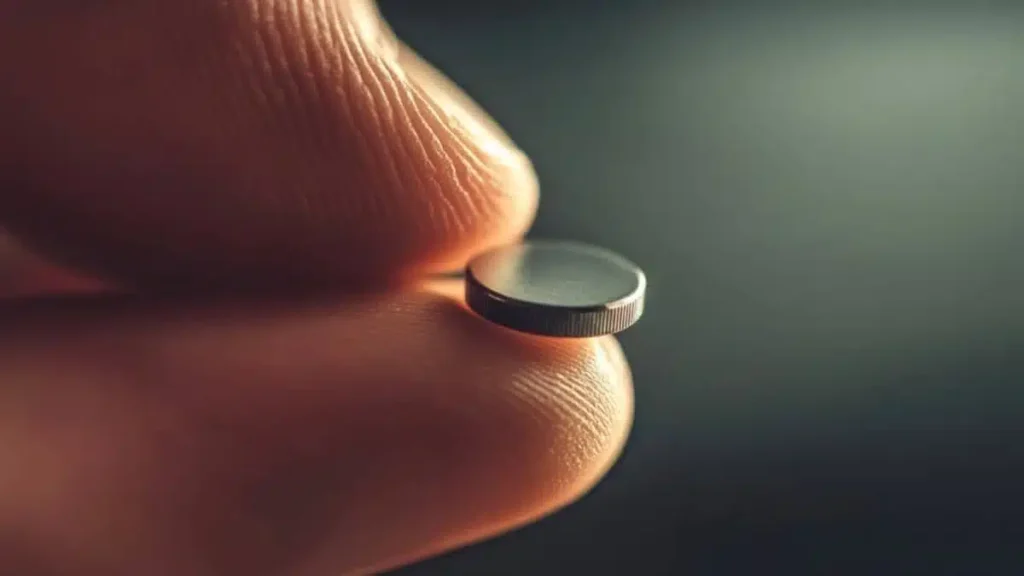In a historic leap for clean energy and miniaturized power technology, China’s coin-sized nuclear battery has stunned the world. The innovation, no larger than a penny, offers a consistent energy source for an astonishing 100 years without a single recharge. As global industries push the limits of what’s possible from medical implants to aerospace exploration this tiny powerhouse could reshape the future of power delivery across sectors. Experts are calling it a potential turning point in how we approach sustainability and longevity in energy design.
How Does the Coin-Sized Nuclear Battery Work?
Unlike traditional batteries that rely on chemical reactions, this coin-sized nuclear battery uses radioactive isotopes primarily Nickel 63 to generate energy through beta decay. These beta particles then interact with a specialized semiconductor to produce electricity, a process both safe and long lasting.
What sets this apart is the technology’s solid state architecture, eliminating the risk of leaks, corrosion, or degradation. The battery is also encased in layers of protective shielding to ensure that no harmful radiation escapes, making it not only powerful but incredibly safe for consumer use.
Applications That Could Change the World
One of the most immediate beneficiaries of the coin-sized nuclear battery is the medical field. Imagine pacemakers or neurostimulators that never need to be replaced for a patient’s entire lifetime. Currently, patients with implanted devices undergo surgery every 5 to 10 years to replace power sources. This not only increases medical costs but also exposes them to surgical risks.
Dr. Mei Liang, a cardiac surgeon at Shanghai Heart Center, recently participated in a prototype implant trial using nuclear powered devices. The patient was 65. This battery may very well outlast him, reducing unnecessary operations and saving resources, she said.
A Game Changer for Deep Space Exploration
Space agencies, including NASA and China’s CNSA, have long relied on radioisotope thermoelectric generators (RTGs) to power missions where solar energy is weak. But these are bulky, costly, and have limited lifespan.
This coin-sized nuclear battery could replace traditional RTGs with a far smaller, longer lasting, and more efficient alternative ideal for probes, satellites, and rovers. Missions to the Moon, Mars, or even deeper could extend for decades without a power related failure.
What Experts Are Saying About China’s Breakthrough
Professor Arjun Patel, an energy physicist at MIT, calls this a transformational shift.
We’ve always dreamed of batteries that don’t die. If this technology scales well, we’re not just talking about gadgets we’re talking about how the world works, he said.
China’s innovation has prompted energy researchers worldwide to rethink the limitations of power storage and durability. Experts in nuclear materials, semiconductors, and nano engineering are converging to examine how this tech could be commercialized for mass deployment.
Challenges and Concerns: Is It Safe?
Safety is naturally the biggest concern with anything nuclear. The development team, however, stresses that the battery’s design is both radiation shielded and tamper proof. The radioactive material is embedded within solid crystalline structures, and the outer casing can withstand extreme conditions.
Dr. Li Cheng, one of the lead engineers at Betavolt, the company behind the invention, shared. We tested the battery under harsh environments high heat, deep cold, physical stress and it performed without fail. There’s zero risk of radiation leakage.
Still, global regulations on nuclear technology could delay worldwide adoption. Countries will need to revisit policy frameworks to allow for safe distribution, especially in medical and consumer electronics.
Economic and Environmental Impact
If deployed at scale, the coin-sized nuclear battery could drastically reduce electronic waste. According to the United Nations, over 50 million tons of e-waste is produced annually, much of it due to disposable batteries and short life electronics.
With a 100 year power supply, manufacturers can design products with ultra long lifespans, cutting down waste and manufacturing emissions. Moreover, the stable power output can enable low maintenance infrastructure in rural or remote areas, including sensors, weather stations, and IoT devices that are otherwise hard to reach or power.
What’s Next for China’s Nuclear Battery Technology?
Currently, Betavolt, the startup behind this coin-sized nuclear battery, is scaling up production and testing models with higher power output. Future versions aim to power drones, military surveillance gear, and even civilian electronics like smartwatches and mobile devices.
We’re just scratching the surface, said Betavolt CTO Jiang Wei. The real revolution begins when these batteries enter everyday life. Imagine never charging your phone again not for decades.
A Tiny Device with Colossal Potential
The emergence of China’s coin-sized nuclear battery marks a pivotal moment in the history of energy innovation. Offering 100 years of maintenance-free power, this development is poised to disrupt industries, improve healthcare, enhance space travel, and drastically reduce global waste.
While it may be small in size, its impact on the world could be monumental. As regulation catches up and safety measures are globally verified, this tiny titan of energy might soon be powering the future.

